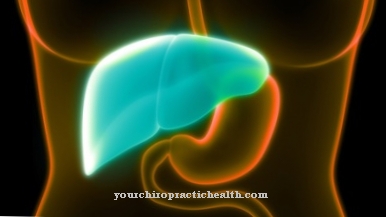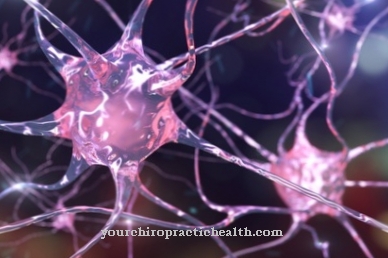The epithelial-mesenchymal transition, also EMT called, refers to the transformation of epithelial cells into mesenchymal cells. This transformation is of great importance for embryonic development. However, this process also plays a key role in the development of metastases in carcinomas.
What is the epithelial-mesenchymal transition
An epithelial-mesenchymal transition is a conversion of already differentiated epithelial cells into undifferentiated mesenchymal stem cells. This process is of particular importance during embryonic development.
As part of this transformation, the epithelial cells are released from their bond and can migrate in the body. In doing so, they pass through the basement membrane. The basement membrane separates the epithelia, glial cells and endothelium from the connective tissue-like cell space. As undifferentiated multipotent stem cells, the migrated cells reach all areas of the developing organism and can be differentiated again into any cell type.
The epithelial cells form the so-called epithelium, which is a collective term for the glandular and covering tissue. The mesenchyme comprises the gelatinous and embryonic connective tissue from which bones, cartilage, smooth muscles, heart muscles, kidneys, adrenal cortex, the blood-forming system with blood and lymph vessels as well as reticular, firm and loose connective tissue develop.
Function & task
The epithelial-mesenchymal transition is an important process during embryogenesis. During this time, an increased growth takes place, in which all cells of the body participate. Epithelial cells that have already differentiated are also included in these growth processes. To do this, however, they have to be converted back into multipotent stem cells.
The most intense growth occurs in the first eight weeks of pregnancy. The actual process of embryogenesis begins around the sixth day of pregnancy after the so-called germ stage (cell development) and lasts until the end of the eighth week of pregnancy. In this phase, the epithelial-mesenchymal transition is of great importance, since all organs are now being created. Many epithelial cells lose their differentiation and attachment again here. They migrate through the basement membrane and are distributed throughout the body. There they behave again like normal multipotent stem cells and are subject to renewed differentiation into different cell types.
Of course, they can also differentiate into epithelial cells again. To do this, the cell contacts must first be reduced and the polarity of the epithelial cells canceled. Cell contact is understood as the cohesion of cells by so-called adhesion molecules. One of the most important adhesion molecules is E-cadherin. E-cadherin is a transmembrane glycoprotein that is dependent on calcium ions. It connects epithelial cells with one another and ensures cell polarity and signal transmission. During embryogenesis, the activity of E-cadherin is reduced. This leads to the loosening of the cell structure. At the same time, the polarity of the cells also disappears.
The epithelial cells have both a so-called apical (outer) and a basal side facing the underlying tissue. The outer side is on the surface of the skin and mucous membranes, while the basal side is connected to the connective tissue located under a basal lamina. Both sides have different functional and structural differences and thus ensure the morphology of the organs. However, embryogenesis requires rapid changes and flexibility of the cells in order to be able to adapt quickly to the growth processes.
After the end of embryogenesis, the epithelial-mesenchymal transition loses its meaning for the organism.
Illnesses & ailments
The epithelial-mesenchymal transition (EMT) is of benefit to the organism only during the very short time of embryogenesis. After the stormy growth phase, the cells are differentiated. There is then no longer any need for a large number of multipotent stem cells. Therefore this process is disabled.
If the epithelial-mesenchymal transition is activated after the end of embryogenesis, this usually happens in connection with malignant tumor diseases. The EMT is responsible for the development of metastases in the context of cancer. The process is similar to that of embryogenesis. Overall, it is a complex process based on genetic regulatory mechanisms that are not yet fully understood. Many responsible genes are only active during embryonic development. Then they are shut down. A possible cause for the renewed activation of these genes could be the upregulation of the transcription factor Sox4. Corresponding research results were presented at the University of Basel. In turn, Sox4 activates a number of other genes that are involved in the epithelial-mesenchymal transition.
The inactivity of the corresponding genes is said to be based on their illegibility due to the coating with certain proteins (histones). However, the Sox4 gene is responsible for the formation of an enzyme called Ezh2. It is a methyl transferase, which causes the methylation of the corresponding histones. The other genes involved become readable again and activate the epithelial-mesenchymal transition.
The change in the genetic material takes place within a cancerous tumor and thus provides the cause for the complete dedifferentiation of the cancer cells. Without an epithelial-mesenchymal transition, the cancer would only grow at the point of origin and would not spread. However, the formation of metastases makes a tumor particularly malignant and aggressive. That is why we are working on the development of drugs that inhibit the formation of the methyltransferase Ezh2. Corresponding drugs have already been developed, but they are still being tested. Curbing the formation of metastases would, on the one hand, reduce the aggressiveness of the cancer growth and, on the other hand, open up the opportunity to treat hitherto hopeless cases curatively.













.jpg)

.jpg)
.jpg)











.jpg)